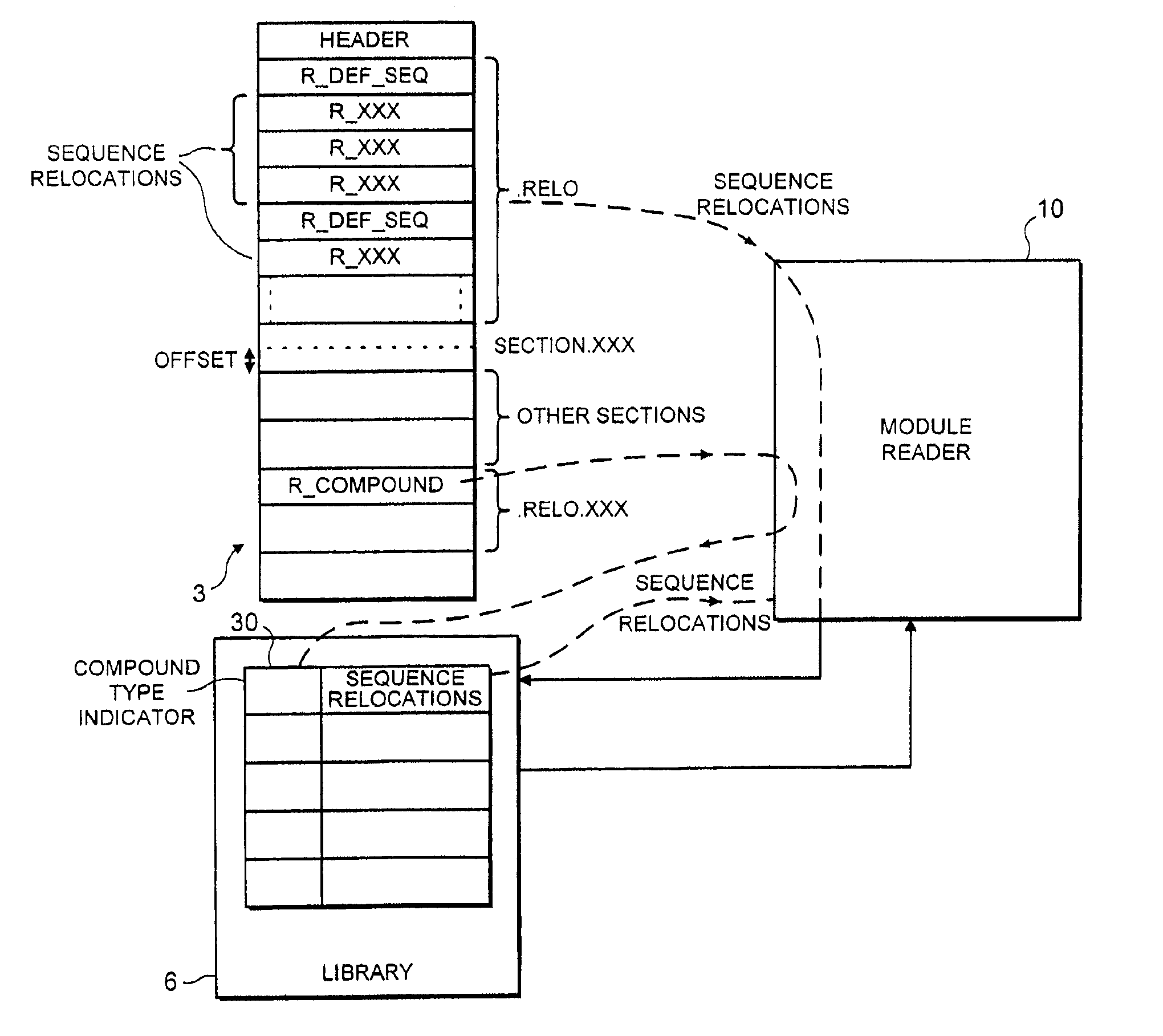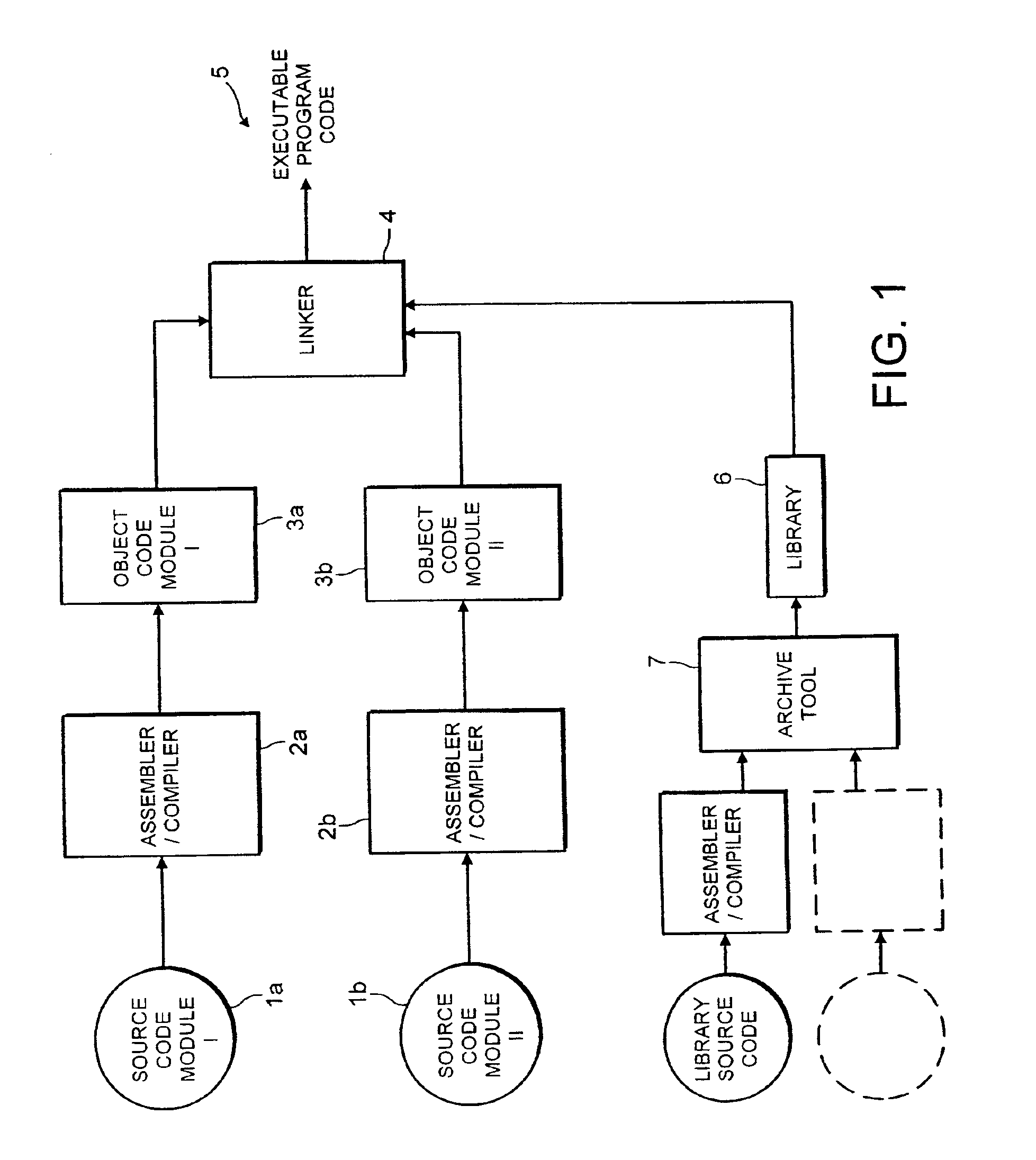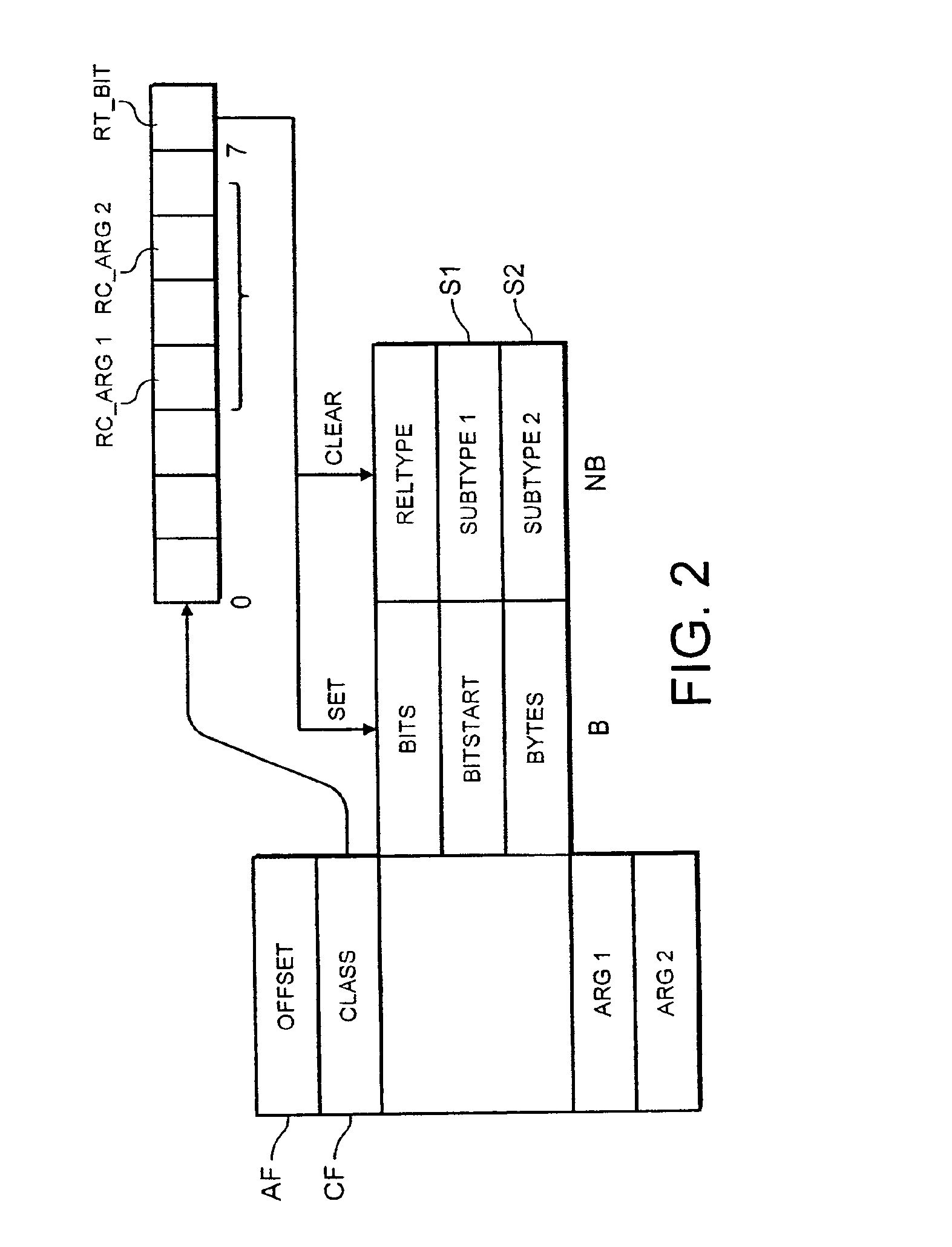Assembling an object code module
a technology of object code and module, applied in the direction of instrumentation, electric digital data processing, program control, etc., can solve the problems of increasing the possibility of errors being introduced, time-consuming manual programming work, and inability to define the required compound relocation
- Summary
- Abstract
- Description
- Claims
- Application Information
AI Technical Summary
Problems solved by technology
Method used
Image
Examples
Embodiment Construction
[0026]With reference to FIG. 1, a system for linking a number of program modules to form a single executable program is shown schematically. A number of program source code modules 1a, 1b, each module written in a high level language, is provided. The particular high level language used for each source code module may vary from module to module, or alternatively all of the program source code modules may be written in the same high-level language. Source code modules contain program instructions or data and assembler directives. Each source code module 1a, 1b, is input to a respective assembler / compiler 2a, 2b which assembles and / or compiles the high level language of the source code module to produce an object code module 3a, 3b. Each object code module 3a, 3b is the low level language equivalent to each respective source code module 2a, 2b, the low level language being a language which is directly readable by a target computer into which the final resulting single executable progr...
PUM
 Login to View More
Login to View More Abstract
Description
Claims
Application Information
 Login to View More
Login to View More - R&D
- Intellectual Property
- Life Sciences
- Materials
- Tech Scout
- Unparalleled Data Quality
- Higher Quality Content
- 60% Fewer Hallucinations
Browse by: Latest US Patents, China's latest patents, Technical Efficacy Thesaurus, Application Domain, Technology Topic, Popular Technical Reports.
© 2025 PatSnap. All rights reserved.Legal|Privacy policy|Modern Slavery Act Transparency Statement|Sitemap|About US| Contact US: help@patsnap.com



